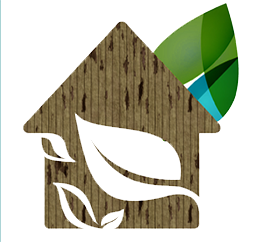Top 2 Secrets on Lawn Care
"September was made for growing grass. Start a new lawn or improve upon an existing one and achieve the results you've always wanted."
Fall's the best time for growing, sustaining and perfecting your lawn.
September was made for growing grass. Cooling temperatures, moisture and
conditions conspire to make soil ideal for seeding. With a little work,
fertilizer and seed, your lawn will be healthy.
- Finish mowing for the season
- Easily take care of leaves
- Establish right soil
- Fertilizing & Reseeding
Mow the Lawn Once More
You should continue mowing your lawn throughout September. The last time
it's cut, leave it slightly taller than usual to better absorb nutrients and
moisture in preparation for winter.
"Mother nature intended for leaves to kiss the ground. Lay there. Return nutrients to future generations."
Leaves, Leaves and More Leaves
 As long as your lawn is not completely blanketed in leaves the last time
you mow, go over the leaves with your lawn mower vs. raking, It may take a couple
of passes, but the finely chopped leaves will help retain moisture and return
nutrients to the soil.
As long as your lawn is not completely blanketed in leaves the last time
you mow, go over the leaves with your lawn mower vs. raking, It may take a couple
of passes, but the finely chopped leaves will help retain moisture and return
nutrients to the soil.The Secret to a Healthy Lawn
Lime application is often forgotten in creating a healthy lawn. We know our lawns need fertilizer, weed-n-feed and water. How about healthy soil? Soil is the foundation for which every plant is "built" upon. It is both the catalyst for growth and stabilizer for acidic creating suitable soil.What is Lime?
Lime is basically calcium and magnesium. Yes, it is the very same chemicals removed from hard water. The components of lime facilitate the uptake of nutrients and the growth of healthy microbes, and are almost like little pathways or the arteries to each grass seedling providing the very nutrients needed for proper and healthy growth. It also has a double purpose of removing dangerous toxins like aluminum and manganese, Commonly, it is found in a powder or as pellets in most stores like Ace Ace Hardware. Both lime powder and pellets work equally fine and only vary depending on your method of application.
 What Lime Isn't?
What Lime Isn't?
Lime is not a fertilizer, pesticide or insecticide. It isn't mulch, compost
or anything similar in nature and is in no relation to the fruit. Fertilizing
Fertilize after Labor Day and the first week of November. Look for a slow-release fertilizer, low nitrogen and high phosphates. Spread ferterlizer evenly - using 1/2 for shaded areas. Any home garden store should be able to help choose a formula.When Do I Apply Lime?
Regardless of the situation, check the pH of your soil. Georgia clay soil is already slightly acidic. With the proper maintenance can become the ideal soil for a beautiful lawn. Oddly enough, the reason is our own doings. In most cases, the very things we add in the spring and summer for that beautiful green lawn are actually changing the composition of your soil structure.The only time to apply lime is in the fall and early winter when temperatures are colder. Some say it's okay in the spring, but several independent university studies have shown this damages the soil. Therefore, the conciseness is that application in warm and hot periods will damage lawns.. The key thing is to apply when it is cool, but not so cold that the ground is frozen and make sure there is no impending rain within the next 24 hour forecast. This is very important in preventing any runoff.
 |
| Fig. pH Ranges for soil |



No comments:
Post a Comment